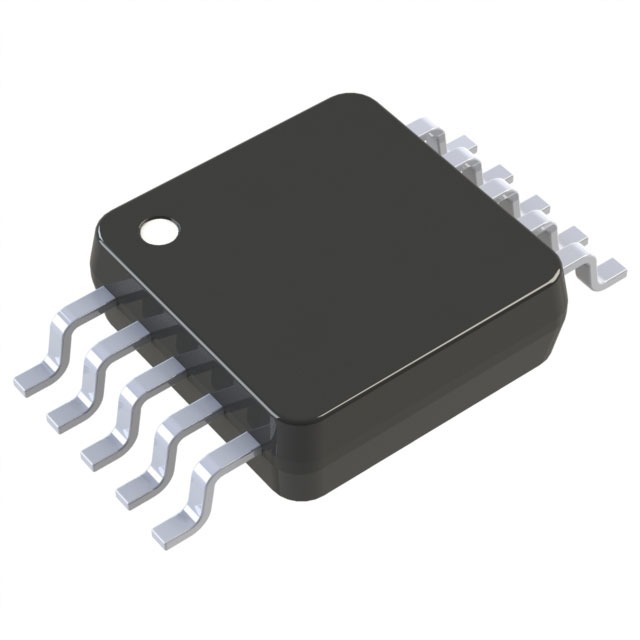NB6L11DTG
Overview
Category
NB6L11DTG belongs to the category of integrated circuits (ICs).
Use
NB6L11DTG is commonly used in electronic devices for signal processing and synchronization.
Characteristics
- High-speed operation
- Low power consumption
- Small package size
- Wide operating voltage range
Package
NB6L11DTG is typically available in a small outline integrated circuit (SOIC) package.
Essence
The essence of NB6L11DTG lies in its ability to provide reliable signal processing and synchronization capabilities.
Packaging/Quantity
NB6L11DTG is usually packaged in reels or tubes, with quantities varying depending on the manufacturer's specifications.
Specifications and Parameters
- Operating Voltage Range: 2.375V to 3.8V
- Input Clock Frequency Range: 0Hz to 2.5GHz
- Output Clock Frequency Range: 0Hz to 2.5GHz
- Supply Current: 50mA (typical)
- Operating Temperature Range: -40°C to +85°C
Pin Configuration
The pin configuration of NB6L11DTG is as follows:
- VCC
- GND
- CLKIN
- CLKOUT
- SEL
- NC
- NC
- NC
Functional Characteristics
NB6L11DTG offers the following functional characteristics:
- Signal input and output synchronization
- Clock frequency division
- Low jitter performance
- Differential signaling support
Advantages and Disadvantages
Advantages
- High-speed operation allows for efficient signal processing
- Low power consumption helps conserve energy
- Small package size enables compact device designs
- Wide operating voltage range provides flexibility in various applications
Disadvantages
- Limited pin configuration options
- May require additional external components for certain applications
Applicable Range of Products
NB6L11DTG is suitable for use in a wide range of electronic devices, including:
- Communication equipment
- Data transmission systems
- Networking devices
- Test and measurement instruments
Working Principles
NB6L11DTG operates based on the principles of signal processing and synchronization. It receives an input clock signal, processes it, and generates an output clock signal with synchronized timing.
Detailed Application Field Plans
NB6L11DTG can be applied in various fields, such as:
- Telecommunications: Used in high-speed data transmission systems for reliable signal synchronization.
- Networking: Enables precise clock synchronization in network switches and routers.
- Test and Measurement: Provides accurate timing signals for test equipment used in electronics testing.
- Broadcast and Video: Supports synchronization of audio and video signals in broadcasting equipment.
- Industrial Automation: Facilitates precise timing control in industrial automation systems.
Detailed Alternative Models
Some alternative models to NB6L11DTG include:
- NB6L11D
- NB6L11DR2G
- NB6L11SMNG
5 Common Technical Questions and Answers
Q: What is the maximum operating voltage for NB6L11DTG? A: The maximum operating voltage is 3.8V.
Q: Can NB6L11DTG operate at frequencies above 2.5GHz? A: No, the input and output clock frequency range is limited to 0Hz to 2.5GHz.
Q: Is NB6L11DTG compatible with single-ended signaling? A: No, NB6L11DTG supports differential signaling only.
Q: Does NB6L11DTG require an external power supply? A: Yes, it requires a power supply within the operating voltage range of 2.375V to 3.8V.
Q: What is the typical supply current for NB6L11DTG? A: The typical supply current is 50mA.
This encyclopedia entry provides an overview of NB6L11DTG, including its category, use, characteristics, package, specifications, pin configuration, functional characteristics, advantages and disadvantages, applicable range of products, working principles, detailed application field plans, alternative models, and common technical questions and answers.


